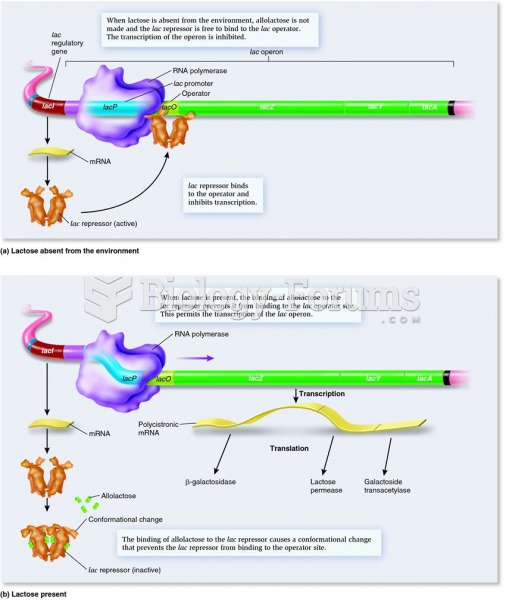|
|
|
Eat fiber! A diet high in fiber can help lower cholesterol levels by as much as 10%.
Drying your hands with a paper towel will reduce the bacterial count on your hands by 45–60%.
In women, pharmacodynamic differences include increased sensitivity to (and increased effectiveness of) beta-blockers, opioids, selective serotonin reuptake inhibitors, and typical antipsychotics.
The use of salicylates dates back 2,500 years to Hippocrates's recommendation of willow bark (from which a salicylate is derived) as an aid to the pains of childbirth. However, overdosage of salicylates can harm body fluids, electrolytes, the CNS, the GI tract, the ears, the lungs, the blood, the liver, and the kidneys and cause coma or death.
Eating carrots will improve your eyesight. Carrots are high in vitamin A (retinol), which is essential for good vision. It can also be found in milk, cheese, egg yolks, and liver.
 Negative control of an inducible set of genes: function of the lac repressor in regulating the lac o
Negative control of an inducible set of genes: function of the lac repressor in regulating the lac o
 Skin testing. Note the spot labeled H, which is the positive histamine control, and the spot labeled ...
Skin testing. Note the spot labeled H, which is the positive histamine control, and the spot labeled ...





